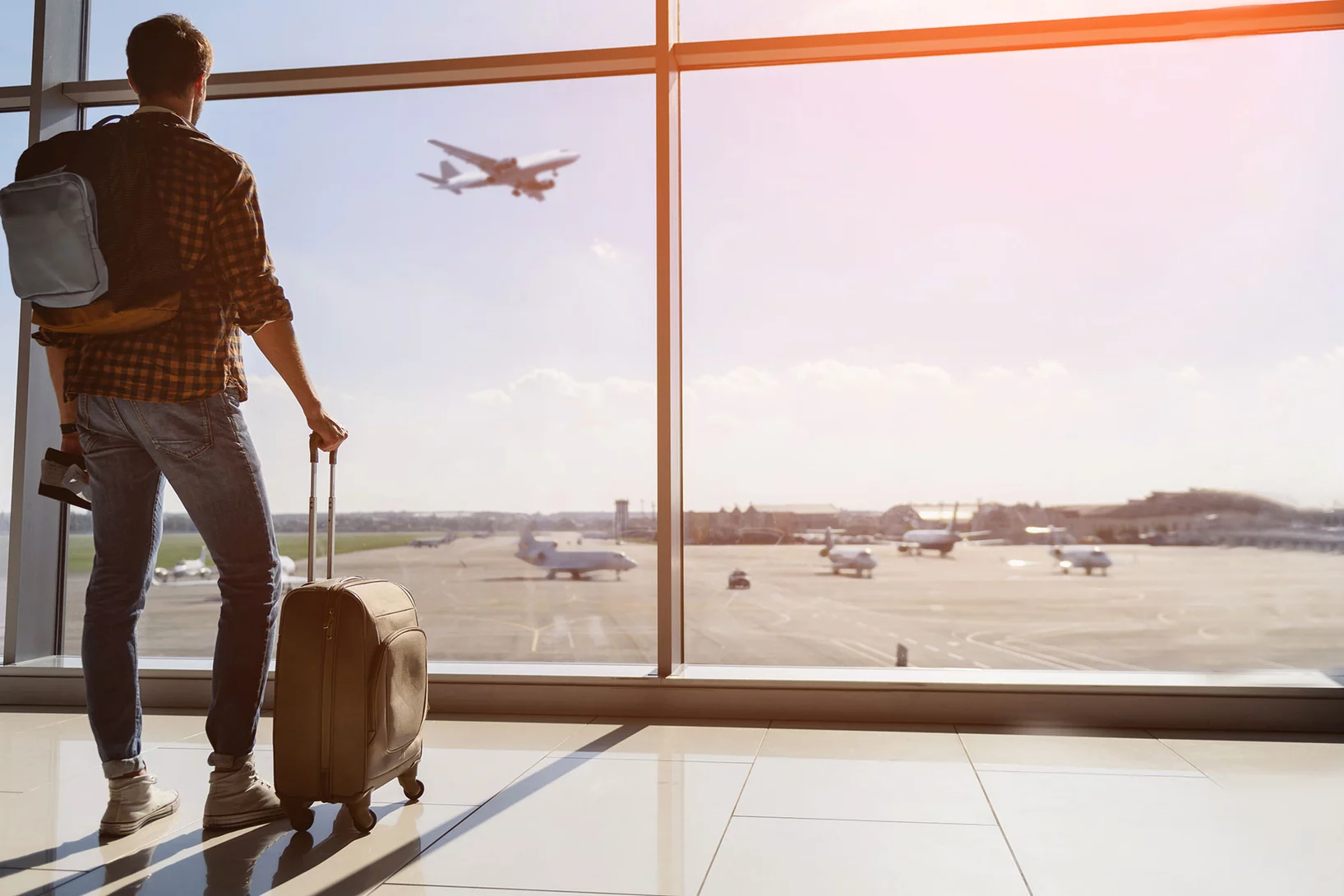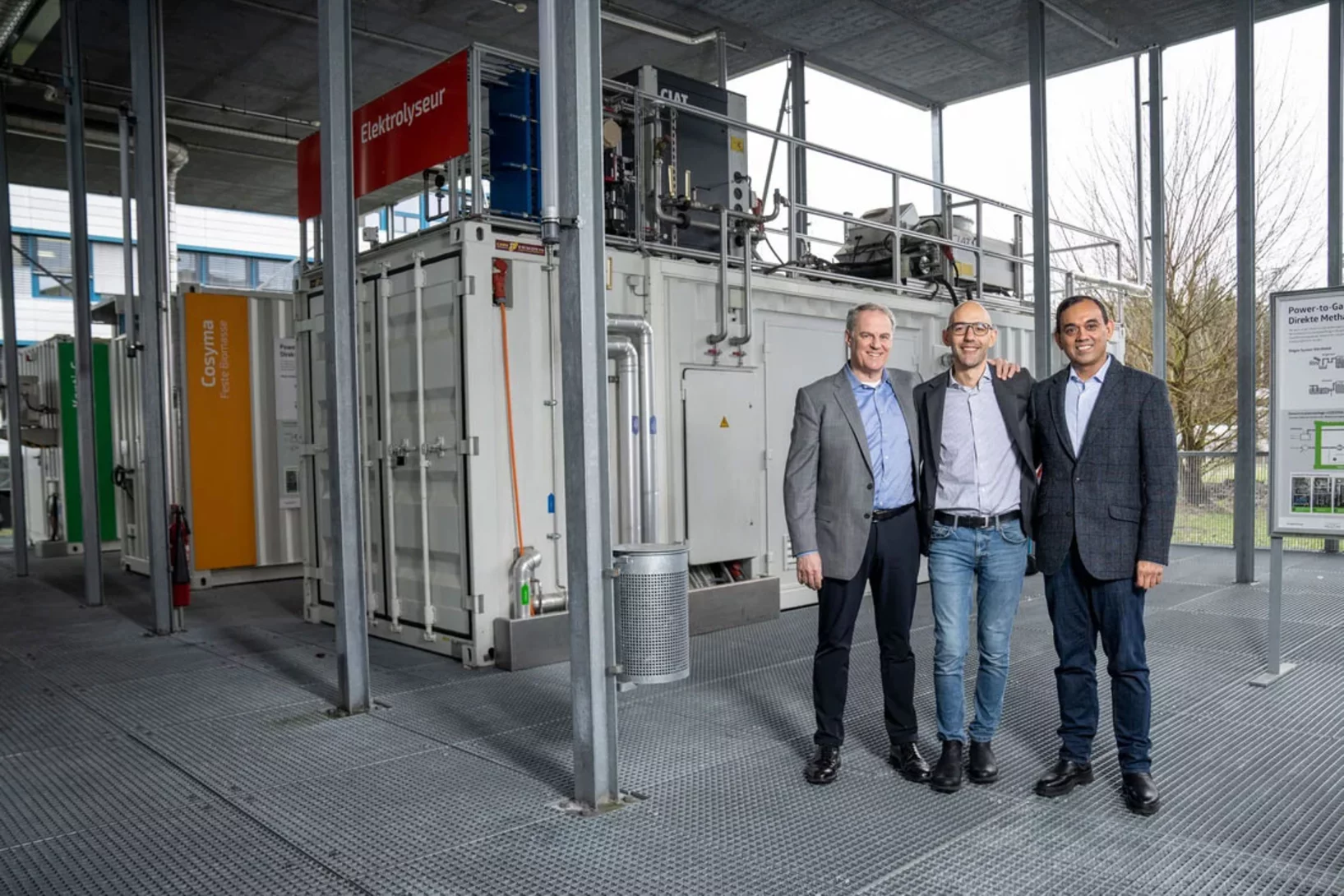Air traffic is responsible for two to three percent of global carbon dioxide emissions. To meet the goals of the Paris Climate Agreement and make air travel climate-neutral by 2050, PSI is carrying out research into sustainable aviation fuel. This could make an important contribution to reducing the climate damage caused by aviation.
Despite the decline in air travel due to the pandemic and a growing awareness of the damaging effects of flying on the climate, people still have a strong desire to travel, and air traffic is expected to increase by two to four percent per year from 2024. However, flying produces the highest carbon dioxide emissions of all means of transport – two to three times more climate-relevant gases are released per passenger or freight kilometre than in other transport sectors.
The most climate-damaging means of travel
However, direct carbon dioxide emissions only account for around a third of the impact that air traffic has on our climate. Indirect effects such as the formation of contrails are equally important.
Condensation trails are caused, among other things, by the emission of water vapour and particulates formed during the combustion of fossil fuel. Moisture and low temperatures at high altitudes cause the particles to freeze as ice crystals and become visible in the form of vapour trails. Under certain conditions, these can lead to the formation of artificial clouds, known as aviation-induced cirrus clouds. Although visible sunlight can pass through some of these clouds virtually unobstructed, they are very efficient when it comes to reflecting and absorbing the infra-red radiation emitted by the Earth’s surface. As a result, such radiation is prevented from escaping into space and heats up the planet instead.
Climate effects like these are more short-lived than direct carbon dioxide emissions, however their impact is all the more striking as the volume of air traffic increases. A number of alternatives are being examined, with a view to reducing the enormous impact of air travel on the greenhouse effect.
The alternatives
Lithium-ion batteries, like those used in electric vehicles, have a very low gravimetric energy density. This means that their mass needs to be enormous if they are to supply the required amount of energy. For medium and long-haul flights, where every kilogram counts, batteries simply weigh too much. In addition, airport logistics would have to be significantly modified in order to charge multiple aircraft quickly and simultaneously. However, battery-powered aircraft may indeed be an alternative as a niche product, for example for short-haul flights with a small number of passengers.
Although liquid hydrogen has a higher gravimetric energy density than traditional aviation fuel, its volumetric energy density is about four times lower. This means that hydrogen-powered aircraft must be fitted with much larger fuel tanks in order to supply the necessary energy. To get around this problem, Airbus, for example, is developing a hybrid technology which burns hydrogen in gas turbines on the one hand and converts it into electricity in fuel cells on the other. However, this means rethinking the design of the entire aircraft, including its fuel system and engines.
Sustainable aviation fuel has the advantage that it can be integrated directly into the existing airport infrastructure and used in conventional engines. So the aircraft fleet currently in use does not need to be replaced, and the sustainable fuel can be introduced gradually by blending it with fossil aviation fuel in increasing amounts. Its molecular composition could also be modified to control the combustion process, significantly reducing the formation of particulates, for example. Current research results suggest that this will not only reduce net global warming, but also improve local air quality at airports.
Electrolysis can be used to produce green hydrogen from new renewable energy sources and water. Finally, hydrogen and carbon dioxide react to form green methanol – the starting material for sustainable aviation fuel. The carbon dioxide is extracted directly from the atmosphere or from non-food biomass, such as wood or plant waste, resulting in a neutral CO2 cycle.
Considering the enormous impact air travel has on the greenhouse effect, must we give it up altogether? Or is there a climate-neutral way of flying? In the final episode of Energy Future, we are looking at sustainable aviation fuel and the climate-neutral future of air traffic. (Video: Paul Scherrer Institute/Benjamin A. Senn, Monika Blétry, Markus Fischer, Mahir Dzambegovic)
Sophisticated manufacturing process at PSI
Producing sustainable aviation fuel turns out to be extremely energy-intensive, however. Hydrogen produced through electrolysis, which is only able to store around 50 percent of electrical energy supplied, is a particularly important factor. Extrapolating this to the total amount of fuel needed, even current levels of demand could not be met by sustainable aviation fuel – and air traffic is in fact still growing.
Jörg Roth, a scientist at PSI, has done the following calculation: “Producing one litre of sustainable aviation fuel requires around 23 to 27 kilowatt-hours of electricity. A passenger aircraft burns around 3.5 litres of aviation fuel per person per 100 kilometres. Given an annual demand of around 300 million tonnes of sustainable fuel, this would call for some 7500 terawatt-hours of electricity from renewable sources, corresponding to three times the total European electricity consumption (2022). And the air travel does not decrease, but increases.”
As part of the “Synthetic Fuels from Renewable Resources” initiative, funded by the ETH Board, and in collaboration with the Swiss Federal Laboratories for Materials Science and Technology (EMPA), the ESI platform at PSI is developing various techniques to make the production of sustainable aviation fuel as energy-efficient as possible. “If we want to continue flying, we must do so in a sustainable way,” explains Marco Ranocchiari, head of the ESI platform. “Sustainable aviation fuel is a sensible alternative for long-haul flights.”
However, if air travel continues to increase, sustainable aviation fuel alone will not be enough. If aviation is to become climate-neutral by 2050, we have no choice but to fly less in the future.
The video series Energy Future deals with everyday questions on the topic of Switzerland’s energy transition. Each short video focuses on one particular issue. Possible solutions are put forward taking the latest results of energy research at the Paul Scherrer Institute.
Text: Paul Scherrer Institute PSI/Benjamin A. Senn
© PSI provides image and/or video material free of charge for media coverage of the content of the above text. Use of this material for other purposes is not permitted. This also includes the transfer of the image and video material into databases as well as sale by third parties.



